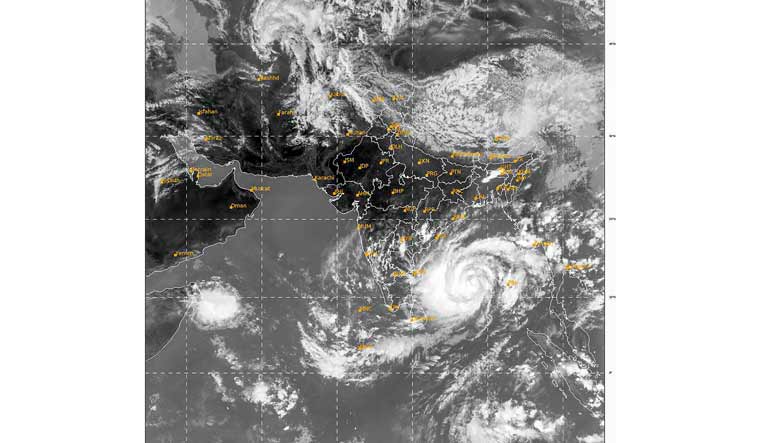The unusual name given to Cyclone Mocha, which originated in the Bay of Bengal and is expected to hit the shores of Myanmar and Bangladesh by Friday, is sure to raise a few curious gazes.
Why is a cyclone named after a drink of all things?
Storms and tropical cyclones are named in a certain way for the public to quickly identify them while passing out warning messages and to avoid general confusion caused by its scientific or technical terms. While exchanging detailed information through multiple stations worldwide, simpler names are easier to handle. In order to build a more efficient, organised and effective naming system, meteorologists first started naming storms alphabetically.
The National Hurricane Centre in 1953 started naming Atlantic tropical storms from a list originated by them. These lists are now maintained and updated by the World Meteorological Organisation (WMO). The WMO and the United Nations Economic and Social Commission for the Asia Pacific (ESCAP) have been naming cyclonic storms since 2000. WMO/ESCAP, which includes Bangladesh, India, the Maldives, Myanmar, Oman, Pakistan, Sri Lanka, and Thailand, decided in 2000 to name cyclones in the region. In 2018, Iran, Qatar, Saudi Arabia, the United Arab Emirates, and Yemen were added to the group. The WMO/ESCAP Panel on Tropical Cyclones (PTC) finalised the list after the aforementioned countries submitted suggestions.
Since 2020, cyclone names including Nisarga, Gati, Nivar, Burevi, Tauktae, Yaas, Gulab, Shaheen, Jawad, and Asani suggested by member countries in alphabetical order have been used on the first set of lists. The names Mandous and Mocha suggested by the UAE and Yemen respectively in the first batch of names were set to be adopted for the next two tropical cyclones.
'Mocha', a popular name for most chocolaty coffee beverages, is borrowed from Al Mocha—a port city on the Red Sea in Yemen. The first recorded use of the name was in 1849. The port was the lifeblood of Yemen's coffee trade. All of Yemen's coffee was exported from this singular port, especially Mocha which very quickly grew to become one of the world's most-loved beverages.
The Ethiopian nomadic people are said to be the first to actually discover the stimulating effects of coffee. A very popular legend that associates the discovery of the beans to the goatherds of the Ethiopian plateau is that of the goat herder Kaldi, who upon discovering the effect the berry had on his goats, went and reported it to the abbot of a local monastery. The abbot then proceeded to make a drink out of it to test it out for himself. Seeing the energising capacity of the drink, the abbot went on to spread the word about the magic drink. Soon its popularity reached the Arabian peninsula where farmers procured the berry, cultivated it and started trading it with the world.
Another probable origin can be traced to a legend about a healer named Sheikh Omar who, after being exiled from the city of Mocha, resorted to feeding on berries to sustain himself. To soften the berries and to reduce their bitterness Omar boiled them in water; in doing so he chanced upon the coffee berry that surprised him with its revitalising ability. He called it a miracle drug. The popularity of his discovery soon reached his hometown Mocha and he was welcomed back as a saint.
The rich and rather intriguing history behind coffee and the name Mocha, which has become a household name in all cafés, would make a person appreciate the simple drink a bit more.



